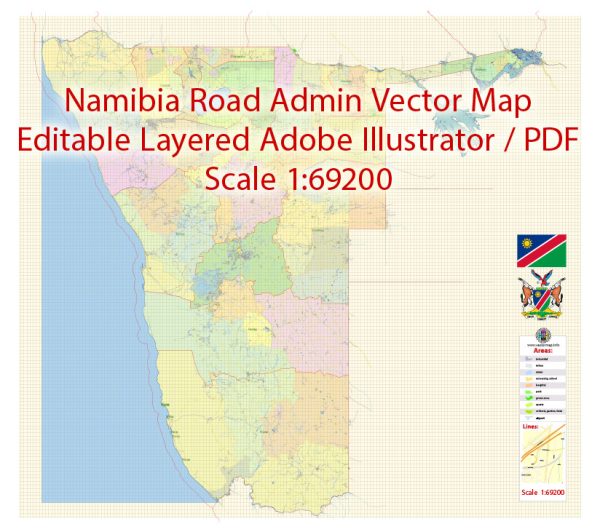Namibia, located on the southwestern coast of Africa, has a relatively well-developed transportation system that includes both maritime and air transportation. Here’s an overview of each:
Maritime Transportation:
- Ports:
- Walvis Bay: This is Namibia’s primary deep-water port and a crucial gateway for international trade. It is strategically located and serves as a key transportation hub not only for Namibia but also for landlocked neighboring countries such as Botswana.
- Shipping Routes:
- Namibia’s coastline along the Atlantic Ocean provides access to major shipping routes. The country is a vital link for goods moving to and from Southern Africa.
- Fishing Industry:
- Namibia has a thriving fishing industry, and maritime transportation plays a vital role in the export of fish and fish-related products.
- Transport Infrastructure:
- The government has invested in port infrastructure to enhance efficiency and accommodate larger vessels, contributing to the overall development of the maritime sector.
Air Transportation:
- Airports:
- Hosea Kutako International Airport (Windhoek): Namibia’s main international airport, connecting the country to various destinations globally.
- Walvis Bay International Airport: Located near the port, it facilitates air travel in the western part of Namibia.
- Eros Airport (Windhoek): Primarily used for domestic flights and general aviation.
- Airlines:
- Air Namibia, the national airline, has historically played a central role in connecting Namibia with regional and international destinations. However, as of my last knowledge update in January 2022, there were some challenges facing Air Namibia, including financial issues.
- Regional Connectivity:
- Namibia’s strategic location makes it a hub for regional flights, connecting to neighboring countries in Southern Africa.
- Infrastructure Development:
- Namibia has been investing in airport infrastructure to accommodate increasing passenger numbers and to enhance the overall efficiency of air travel.
- Tourism:
- The country’s unique landscapes, including the Namib Desert and wildlife reserves, attract tourists. As a result, air transportation plays a vital role in supporting Namibia’s tourism industry.
- Air Safety and Regulations:
- Namibia adheres to international safety standards and regulations to ensure the security and safety of air travel.
Namibia’s geographic location, with a long coastline along the Atlantic Ocean, positions it as a key player in regional trade and transportation. The country continues to invest in its transportation infrastructure to support economic growth and regional connectivity.


 Author: Kirill Shrayber, Ph.D.
Author: Kirill Shrayber, Ph.D.